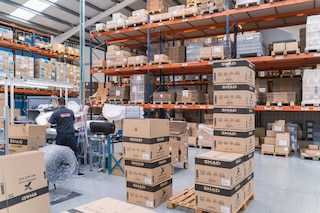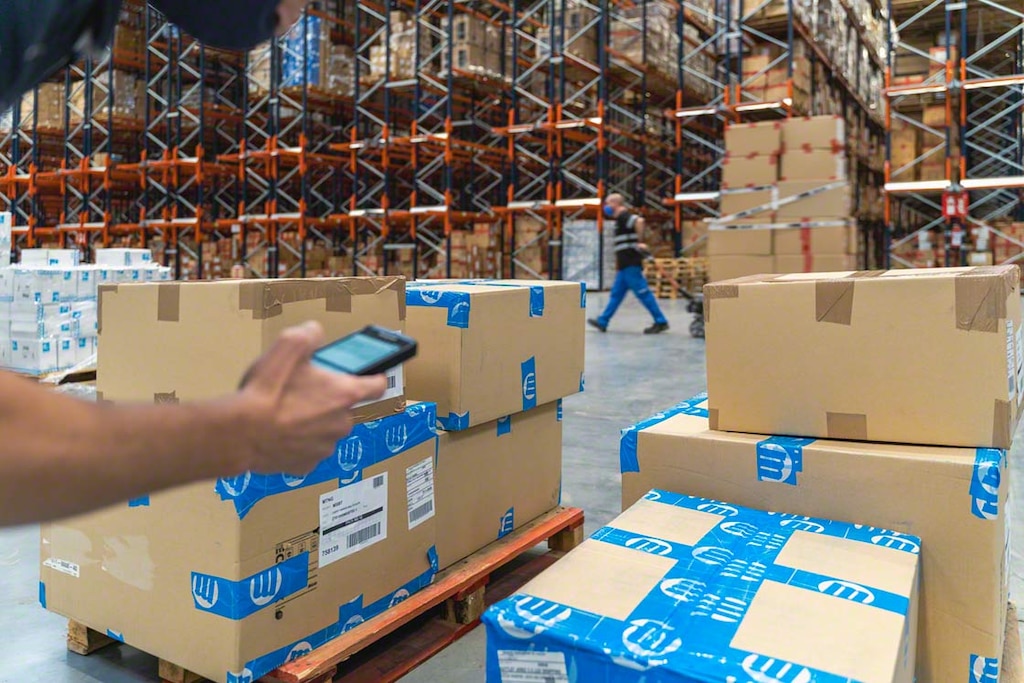
Flexible fulfillment and the supply chain
The concept of flexible fulfillment arose from the need to have a supply chain elastic enough to prepare and dispatch an order from any distribution center or even from a physical store.
Companies that work with predictable sales volumes have more stable logistics systems, as they’re able to define in advance the space, the stock, and the resources required to meet demand and minimize costs. Like it or not, this is no longer a reality in the face of the e-commerce boom. The challenge of successfully managing e-commerce logistics is enormous: in addition to exposure to variables that are more difficult to control, demand is more volatile and, thus, order management becomes more complicated.
In this post, we’ll explain flexible fulfillment in detail and illustrate how a more agile logistics system helps businesses achieve their main objective: to deliver orders to customers in any circumstances.
What is flexible fulfillment?
The logistics strategy known as flexible fulfillment centers on adapting order preparation to a more complex demand so as to dispatch these orders from any distribution center, warehouse, or store.
The primary goal is to deliver any order at any cost. On occasion, this might even be done through individual shipments; companies risk sacrificing part of the profitability so as not to tarnish the brand image by cancelling a purchase due to lack of stock. For this reason, it’s vital to implement a flexible logistics strategy capable of adapting to changes in demand.
Against the current backdrop, in which e-commerce reigns supreme, many businesses don’t know how to manage fluctuations in demand, either because the order volume is lower than that forecasted or because they’re incapable of responding to a sudden rise in demand. Likewise, the internet has enabled the unprecedented internationalization of sales channels, but it’s not always possible to have the entire inventory physically in stock in all countries and regions. In such a changing, unpredictable environment, flexible fulfillment has emerged to help organizations better adjust to the particular features of Logistics 4.0.

How to achieve flexible fulfillment
To satisfy the demands of customers or of other distribution centers, flexible logistics is crucial. So, what does this mean? Warehouses and distribution centers must be able to prepare orders that were not originally assigned to them.
Companies that have various distribution centers spread out among different locations are in the process of transforming and changing their logistics strategy. Take the example of a business with a distribution center in Europe and another in the US, each of which is charged solely with preparing and distributing orders in its region. If an item isn’t in stock in the designated facility, it will be shown as sold out. Consequently, the customer won’t be able to purchase it, which means a lost sale.
On the other hand, when following a flexible fulfillment strategy, the stock will be seen as available in all countries, provided the product is indeed in one of the company’s centers. Thanks to this, that order will be delivered, although from a center further away and to the detriment of the order's profit, which will be lower due to the higher cost of transportation. The aim is none other than to satisfy the customer by all means with the product requested.
Flexibility is one of the most important factors in the supply chain. Flexibility is synonymous with adaptation, and in logistics, this means being equipped with the storage systems and processes necessary to keep pace with customer and industry demands.
In this sense, another trend is to take advantage of a brick-and-mortar store to use it as a distribution center, a strategy known as ship from store. This means that if a store has a product in stock, it can package the order and ship it to the customer. It’s also possible to have the establishment act as an order pick-up point, which is common in an omnichannel strategy.
WMS: linking warehouses and physical stores
Flexible fulfillment involves management of a larger number of products, making the process more complex. To tackle this, it’s essential to have a warehouse management system (WMS) that digitally connects all a company’s distribution centers and ensures total product traceability.
Let’s take a look at a case study: 3PL Casintra manages and supervises all processes at its five warehouse in Spain using a single warehouse management system: our Easy WMS. This way, it can organize 2,000 SKUs and, thanks to its cloud connection, work online with its customers.
Another aspect to take into account when aiming for flexible fulfillment and an agile supply chain is the management of stock in physical stores. Easy WMS’s Store Fulfillment module provides real-time control of inventory in the warehouse and brick-and-mortar stores, in addition to syncing picking, replenishment, transfers between stores, and returns. With this module, any physical store can operate as a small distribution center for preparing and dispatching orders to customers.

Benefits of flexible fulfillment
Although greater flexibility in order fulfillment and the supply chain raises the cost of preparing and transporting an order, it also brings the following advantages:
- Increased sales. By consolidating the stock to satisfy demand, consumers will be able to purchase a product even if it isn’t available in the warehouse that, theoretically, should have been responsible for its distribution. There are times when ensuring a sale trumps profitability.
- Customer loyalty. Customers will purchase your products instead of turning to your competition. Plus, satisfied customers become brand ambassadors, thus encouraging other potential customers.
- Improved responsiveness. All distribution centers work hand in hand towards the same goal, so your company’s logistics systems will be better able to effectively absorb an abrupt rise in demand. If one facility is overloaded, another will lend a hand as needed.
- Logistics flexibility and scalability. Your organization’s logistics systems will be ready to make its growth prospects a reality more easily and more quickly, with a fully competitive supply chain that adjusts accordingly to changes and to the new needs of a market constantly in flux.
Businesses with a flexible logistics structure can prepare and send orders from any distribution center or physical store, reacting in an agile way to demand volatility, increasing sales and winning the loyalty of increasingly demanding consumers.

Importance of delivering an order
The trend for supply chains is to work towards one non-negotiable purpose: orders must be delivered, no matter the cost. Therefore, flexible fulfillment has become a logistics strategy seen more often in firms in sectors as diverse as the consumer goods, food, and retail industries.
Whether your company has lost sales due to a lack of stock in the assigned warehouse or you merely feel it’s time for your distribution centers to work in unison to deliver more orders, contact Interlake Mecalux. Our team of professionals will help you implement the storage and management solution you need to benefit from greater flexibility in order fulfillment and your supply chain.
